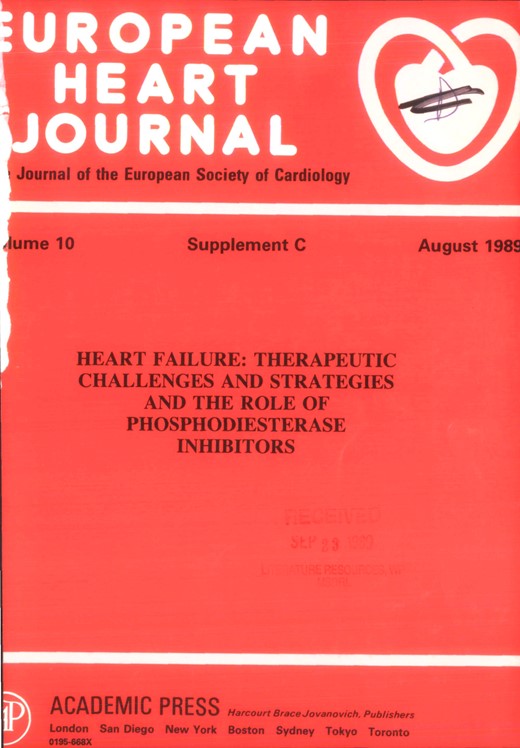-
Views
-
Cite
Cite
L. Wilhelmsen, H. Eriksson, K. Svärdsudd, K. Caidahl, Improving the detection and diagnosis of congestive heart failure, European Heart Journal, Volume 10, Issue suppl_C, August 1989, Pages 13–18, https://doi.org/10.1093/eurheartj/10.suppl_C.13
Close - Share Icon Share
Abstract
Early detection of heart failure requires criteria by which to define the initial stages of a syndrome which often has an insidious onset and which may progress slowly for many years. The most specific definitions of heart failure are those obtained towards the end of the disease process, but reliance upon these means that, although few cases are misclassified, only manifest cases can be detected. Since prevention is the ultimate goal, early detection of subjects at risk and a wider understanding of the pathophysiological mechanisms and risk factors are necessary. The principal causes of heart failure in the Western world are coronary artery disease and hypertension; valvular heart disease and other cardiac disorders are relatively uncommon causes. The major risk factors are obesity, tobacco smoking and diabetes mellitus, and in a prospective large-scale study we have also shown that individuals who develop manifest symptoms of heart failure often have a long history of exercise-induced dyspnoea. Clearly, identification of the early symptoms of heart failure and prompt treatment of risk factors such as hypertension and obesity are important objectives. However, a better understanding of the underlying biochemical and structural abnormalities would help to define more appropriate preventive treatments.





